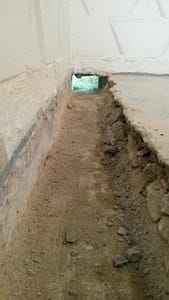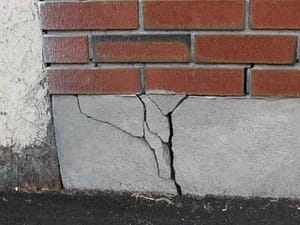See This Report about Best Basement Waterproofing
See This Report about Best Basement Waterproofing
Blog Article
Some Of Best Basement Waterproofing
Table of ContentsHow Best Basement Waterproofing can Save You Time, Stress, and Money.Best Basement Waterproofing Things To Know Before You Get ThisThe Ultimate Guide To Best Basement WaterproofingThe 8-Minute Rule for Best Basement Waterproofing
What causes water damages problems in your cellar? Right here are a few things to search for: when the structure of your home is compromised, water is great at sneaking in between small cracks and gaps and creating damage. Pipes that line the within your wall surfaces are simply one example of where water damages can take place.The soil and ground of your home is really essential. If there is excessive water bordering your home, nevertheless, it can press the soil into your home and trigger the seals of your basement to come to be endangered. when you see excess water in locations where it ought to not be, that is a great indication that you have a problem.
Concrete waterproofing coverings are cement-like; as soon as completely dry, they adhere permanently to concrete and masonry walls. You apply the finishing with a heavy brush made with bristles swirled throughout application for an eye-catching, finished look. Concrete water resistant finishes can not be applied to previously painted surfaces Silicate-based concrete sealers, additionally known as densifiers, are likewise appropriate only for walls that haven't been repainted or secured.
Best Basement Waterproofing for Dummies
Because these are passing through sealers, they can not flake off or peel, and you can have paint applied over them. The American Eagle team might find much more challenging causes for your wetness issues; there are added solutions readily available. Plastic sheets and panels could be integrated with indoor cellar drain systems. They do not quit water from getting with the wall, yet they do stop it from spoiling things in the cellar.
A sump pump is required to relocate water out of your cellar. In order to appropriately recommend a service for your damp basement, call American Eagle for a no-obligation see. Our service technicians will have the ability to clarify which options are choices for your home. Why should you waterproof your cellar? Below are a few things the specialists can mount to aid the waterproofing procedure: this is made for the wall surfaces of your cellar.

Cellar waterproofing is a wonderful method to obtain in advance of possible water damage that might come your way.
Best Basement Waterproofing for Dummies
When it concerns protecting your home, among the most essential steps you can take is cellar waterproofing. A dry cellar not only ensures a secure and healthy setting for you and your household, but look at this site it additionally assists to avoid expensive water damages and mold and mildew growth. In this blog site post, we will certainly go over the value of cellar waterproofing, the benefits it gives, and just how you can set about you can find out more protecting your space.

When it concerns cellar waterproofing, there are numerous methods that can be used to maintain water out of your room. These include interior sealers, exterior waterproofing membranes, and water drainage systems. The best technique for your basement will certainly depend on elements such as the degree of water breach, the condition of your foundation, and your budget plan.
To conclude, basement waterproofing is an essential step in shielding your home from water damages, mold and mildew development, and various other concerns. By purchasing basement waterproofing, you can make sure that your space stays completely dry, risk-free, and healthy and balanced for you and your family. Not only does cellar waterproofing provide satisfaction and security for your home, however it can additionally enhance its value and save you money on energy expenses in the long run.
Getting The Best Basement Waterproofing To Work
Inside sealers are a kind of basement waterproofing method that entails using a sealant to the within of the basement walls and floors. Water can permeate right into a basement via cracks, voids, or permeable concrete, specifically in locations where there is high groundwater or poor water drainage. This can bring about water damages and mildew growth, as well as view damages to the foundation and architectural integrity of the structure.

It is an efficient solution for protecting against water damages and preserving the architectural stability of the structure. It can be pricey and disruptive to set up, as it requires excavation around the foundation and might entail landscaping and various other repairs once the waterproofing is full. Nevertheless, this technique is one of the most reliable and lasting option for avoiding water seepage in the basement.
Foundation fracture injections are an approach of fixing cracks in the foundation walls from the within, without digging deep into the dirt around the foundation. The process includes injecting a fluid polyurethane or epoxy right into the splits, which after that sets and creates a water resistant obstacle that prevents water from seeping through. This technique is typically used for smaller cracks that do not position a structural hazard, and can be completed quickly and with minimal disruption to the building's residents.
Report this page